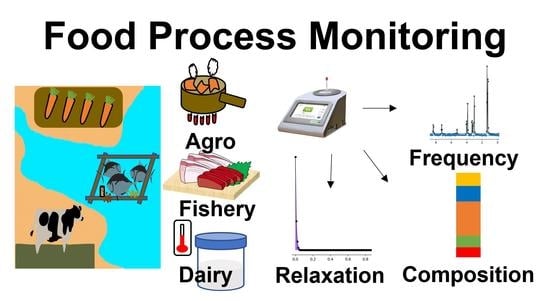Parameter Visualization of Benchtop Nuclear Magnetic Resonance Spectra toward Food Process Monitoring
Abstract
Share and Cite
Hara, K.; Yamada, S.; Chikayama, E.; Kikuchi, J. Parameter Visualization of Benchtop Nuclear Magnetic Resonance Spectra toward Food Process Monitoring. Processes 2022, 10, 1264. https://doi.org/10.3390/pr10071264
Hara K, Yamada S, Chikayama E, Kikuchi J. Parameter Visualization of Benchtop Nuclear Magnetic Resonance Spectra toward Food Process Monitoring. Processes. 2022; 10(7):1264. https://doi.org/10.3390/pr10071264
Chicago/Turabian StyleHara, Koki, Shunji Yamada, Eisuke Chikayama, and Jun Kikuchi. 2022. "Parameter Visualization of Benchtop Nuclear Magnetic Resonance Spectra toward Food Process Monitoring" Processes 10, no. 7: 1264. https://doi.org/10.3390/pr10071264
APA StyleHara, K., Yamada, S., Chikayama, E., & Kikuchi, J. (2022). Parameter Visualization of Benchtop Nuclear Magnetic Resonance Spectra toward Food Process Monitoring. Processes, 10(7), 1264. https://doi.org/10.3390/pr10071264






